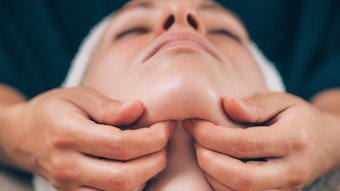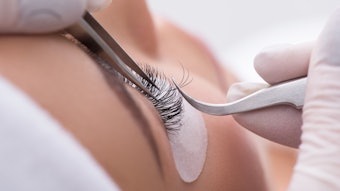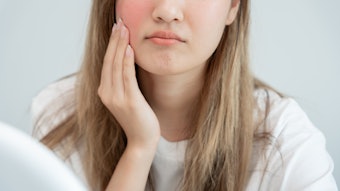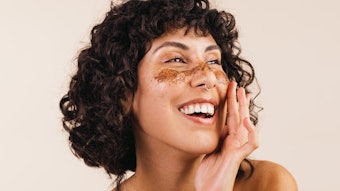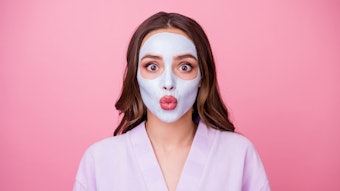
Evelyn Lauder, co-founder of the Breast Cancer Research Foundation, stated, “Knowing how to age and not being afraid of aging is very healthy.” Helping clients to maintain their youthful appearance in a world that promotes imagery of young, happy and healthy men and woman can therefore improve their self-confidence. Educating them on the contributing factors that accelerate the aging process, what individuals can do to stave off and even reverse the visible signs of aging, and what their clinician or esthetician can do will play a vital role in maintaining a youthful appearance.
Skin aging is due to a combination of intrinsic and extrinsic causes. Although one cannot change genetics, they can mitigate the effects of extrinsic offenders—especially seeing as up to 85% of the visible signs of aging are due to extrinsic insults. Therefore, educating clients on proper sun protection and avoidance is an excellent place to start.
Intrinsic aging
Genetics play a strong role in the way skin ages over a lifetime. In relation, there is a fairly new field of study in skin care called epigenetics that focuses on gene expression. Although studies of the human genome have been ongoing for some time, the ways in which genetics influence the skin are just becoming apparent.
Epigenetics focuses on the distinct molecular marks left by gene expression.1 Whether good or bad, these marks replicate themselves and serve as the jumping off point for healthy or diseased skin, as in the case of skin cancers, acne or rosacea. Once science provides ways to erase unfavorable molecular marks, intrinsic aging will become stabilized. Research in this field has found that genes play a larger role in how skin ages, which is one reason why two clients of the same age can look drastically different.
Extrinsic aging
Extrinsic aging is due to cumulative damage from sun exposure; lifestyle choices such as poor diet, lack of exercise and sleep and smoking, and various environmental factors. Most of skin damage and visible aging are due to extrinsic factors, which can be managed to some degree. Some factors are not as easy to address; for example, sleep positions can lead to wrinkles depending on how the face rests on the pillow on a nightly basis. Clients who favor sleeping on their sides or stomach may develop distinct wrinkles on their chin or cheeks where the pillow causes a crease in the skin. This extrinsic factor is difficult to overcome since sleep positions often develop at an early age.
Regaining youth at home
There are countless ways, both on the retail shelf and in the treatment room, as described next, to help aging clients regain a youthful appearance—and developing a trust-based partnership with them is vital to helping them make dramatic changes in their skin. It helps to weave real-world comparisons into conversation to communicate how important their own role is in the success of their treatment plan. One effective analogy is the 60:1 ratio, which reminds clients that in an average month, they treat their skin 60 times whereas clinicians only have one opportunity per month to address their skin concerns. This is why daily care regimens are essential to the overall success of the aging client.
Product ingredients
A number of ingredients should be included in the daily regimen of aging clients; specifically, those that encourage collagen deposition, antioxidant protection and healthy cell regeneration. These include L-ascorbic acid, retinoids, peptides, stem cell extracts and broad spectrum sunscreens.
L-ascorbic acid. The only form of vitamin C that is readily accepted by the skin is L-ascorbic acid. A variety of vitamin C esters, such as ascorbyl palmitate, also provide antioxidant benefits, but they do not stimulate collagen production or provide the anti-aging benefits that L-ascorbic acid provides. As an ancillary antioxidant, anti-inflammatory and UV-protective ingredient, L-ascorbic acid is an exceptional choice for virtually all skin types and conditions, especially those that present for the aging client.2 Ideally, products with L-ascorbic acid should be applied during the client’s morning daily care routine to maximize antioxidant and UV-protective benefits.
Retinoids. Retinoids include all forms of vitamin A, such as retinoic acid, retinaldehyde and retinol. Studies have found that retinoids stimulate the production of collagen, hyaluronic acid and elastin, all of which support the density of the dermis. They are also an excellent choice for treating hyperpigmentation because they help to inhibit the process of melanogenesis at multiple points. Retinoids also encourage and regulate cellular turnover, allowing youthful, evenly pigmented cells to rise to the surface of the skin.3 Due to the delicate nature of this ingredient, its tendency to oxidize in UV light, and its propensity to make the skin sun-sensitive, retinoid-containing products should only be used in the client’s evening routine.
Peptides. Peptides, like retinoids, are a larger family of ingredients that perform specific functions within the skin. Three specific types of peptides have proven results and are used widely in anti-aging products: neurotransmitter-affecting peptides, carrier peptides and signaling peptides.
Neurotransmitter-affecting peptides interfere with specific messages being sent from one neuron to the next. This message could be to produce collagen or minimize repetitive facial expressions. Since peptides are found in nearly every living tissue, they can be quite effective when introduced into an aging client’s routine. Acetyl hexapeptide-8, for example, is one commonly used neurotransmitting peptide that helps to minimize facial expressions that can lead to wrinkling.
Copper peptides are the most common and most researched carrier peptide. They have been shown to increase collagen, glycosaminoglycan (GAG) and protein production.4 Lastly, signaling peptides such as palmitoyl pentapeptide-4, palmitoyl oligopeptide and palmitoyl tripeptide-38 are frequently used in anti-aging products. These initiate certain responses in the skin, such as collagen deposition or dermal fibroblast enhancement.
Like many ingredients, peptides must be applied to the skin twice daily for the most beneficial outcomes. Clients should be encouraged to use any peptide-containing anti-aging product both in the morning and evening.
Stem cell extracts. Stem cell extracts are generally used to replenish the skin as it undergoes wound repair in the basal layer.5 Plant-derived stem cells are ideal because they protect skin stem cells from UV-induced damage, act as anti-inflammatory agents, and have potent antioxidant capabilities. Their purpose in an anti-aging cosmeceutical is to protect skin, allowing for the regeneration of healthy cells. The most studied plant-derived stem cell extracts include lilac leaf stem cell extract, grapefruit stem cell extract and orange stem cell extract, which as noted, provide antioxidant protection.
Broad-spectrum sunscreen. Sunscreen is not always categorized as an anti-aging product, but it is the most important step to any daily care regimen. Broad-spectrum sun protection is ideal because it guards against both UVA and UVB rays, and has been touted in multiple peer-reviewed studies as the most important anti-aging topical available. Preventing sun damage from ever occurring should be the aim of every client, and since client compliance is many times a challenge, consider stocking several textures and consistencies to ensure the right product is available. Broad-spectrum sunscreens should contain a combination of zinc oxide or titanium dioxide along with octisalate, octinoxate or a similar chemical sunscreen agent.
Regaining youth in the treatment room
The treatment room offers a myriad of ways for the skin care professional to address each client’s skin aging concerns. Treatments should be aimed at improving hydration, stimulating collagen production, increasing cellular turnover, and minimizing hyperpigmentation, fine lines and wrinkles. Blended chemical peels are one way to treat a variety of common skin concerns simultaneously without causing undue inflammation and days of inconvenient and unpleasant downtime. Peels performed in a series also encourage monthly visits and can significantly improve client retention rates.
There are multiple ways to boost outcomes while keeping the treatment interesting for the client.
Dermaplaning. Dermaplaning can be combined with most blended chemical peels safely. Further, the removal of vellus hair is an added bonus that will keep most clients coming back for routine visits.
Microdermabrasion. Microdermabrasion is similar to dermaplaning and should be performed in the same fashion. Although it does not remove vellus hair, it provides the client with the instant gratification of smooth skin following treatment.
Retinoid boosters. Retinoid boosters typically contain a higher percentage of a pure retinol or retinol complex, which helps to encourage accelerated, even exfoliation while addressing hyperpigmentation, fine lines and wrinkles. This treatment also provides an opportunity to offer an add-on treatment for increased results.
Fillers and neurotoxins. Fillers and neurotoxins, although not within the scope of an esthetician’s practice, provide another routine strategy for the aging client to reduce the visible signs of aging. Clients will approach their entrusted esthetician for opinions on the various injectable treatments available. Therefore, having a working knowledge of these treatments and even building relationships with physicians, to whom clients can be referred for such treatment, can further solidify that trust.
Dermal fillers are literally injected under the skin to plump it, and fill fine lines and wrinkles, whereas neurotoxins paralyze the facial muscles in a targeted way to smooth expression lines—botulinum toxin, or Botox, is an example. Some of the more widely used injectable treatments include the fillers poly L-lactic acid, calcium hydroxylapatite and synthetic collagen, as well as hyaluronic acid-based fillers; and the neurotoxins onabotulinumtoxin A, incobotulinumtoxin A and abobotulinumtoxin A.
Aging as a process
Understanding that aging is a varied process can help the esthetician to better treat the individual concerns of clients who are trying to regain their youth. Combining treatments with blended chemical peels not only addresses multiple skin concerns at one time, but also increases client retention rates and leads to a more lucrative business. Although estheticians cannot perform injectable treatments, many aging clients are willing to consider them. Therefore, having a working knowledge of them can further solidify one’s expertise with the clientele. Being a knowledgeable and trusted professional will help to successfully guide clients through the aging process with grace and maintain their youthful appearance.
REFERENCES
- R Jaenisch, A Bird, Epigenetic regulation of gene expression: how the genome integrates intrinsic and environmental signals, Nat Genet 33.3s 245–54 (2003)
- PK Farris, Topical vitamin C: a useful agent for treating photoaging and other dermatologic conditions, Dermatol Surg 31:814–818 (2005)
- Z Draelos, Retinoids in Cosmetics, J Cosmet Dermatol, 18:3–5 (2005)
- MP Lupo, AL Cole, Cosmeceutical peptides, Dermatol Ther, 20:343–349 (2007)
- C Blanpain, E Fuchs, Epidermal stem cells of the skin, Annu Rev Cell Dev Bi. 22:339–373 (2006)

